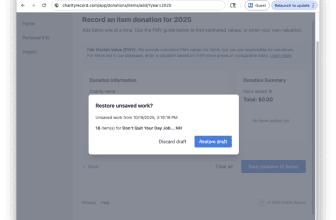
Why Lease Accounting Now Demands Attention
Lease accounting isn’t new—but the way it’s reported has undergone a seismic shift. With the rollout of ASC 842, IFRS 16, and GASB 87, companies must now recognize virtually all leases on their balance sheets. That includes everything from office space and machinery to IT equipment and vehicles.
This shift brings leases out of the shadows and into full financial view.
According to a PwC survey, 78% of companies said implementing the new lease accounting standards significantly impacted their financial reporting and internal processes.
The days of sweeping operating leases under the rug are over. Now, accurate lease accounting is essential for maintaining investor trust, meeting compliance, and building sustainable growth strategies.
Understanding the Right-of-Use Asset Model
Under ASC 842 and similar standards, companies must record a right-of-use asset and a corresponding lease liability for almost all leases. The right-of-use asset represents the lessee’s right to use an asset over the lease term, while the lease liability captures the obligation to make lease payments.
This shift improves transparency but also creates new demands:
- More complex accounting workflows
- Accurate data collection across departments
- Increased audit scrutiny
- New metrics to track for financial forecasting
It’s no longer just about compliance—it’s about control and clarity.
Lease Accounting’s Role in Long-Term Financial Planning
Here’s where it gets strategic. Lease accounting isn’t just about avoiding penalties or satisfying auditors—it’s now a cornerstone of sound financial planning. Here’s how:
1. Improved Visibility of Future Obligations
With all leases on the balance sheet, businesses have a clearer view of their long-term liabilities. This helps:
- Predict cash flow needs
- Avoid liquidity crunches
- Structure better repayment plans
2. Informed Capital Allocation
When you understand the total cost of your leases—including interest and amortization—you can make smarter choices about:
- Buying vs. leasing
- Facility expansion
- Equipment upgrades
- Vendor negotiations
3. Better Debt Management and Ratio Tracking
Lease liabilities now affect key financial ratios like the debt-to-equity ratio and EBITDA. This influences everything from loan covenants to investor confidence.
Having a firm grip on your lease data ensures you’re not blindsided during:
- Credit evaluations
- M&A due diligence
- Board reporting
4. Scenario Planning and Forecasting
Modern lease accounting tools allow you to model different leasing scenarios and their impact over time. For example:
- What happens if you renegotiate a lease?
- How would a lease termination affect your balance sheet?
- Is it more cost-effective to lease new IT hardware or buy it?
These aren’t just tactical questions—they’re central to long-term business health.
Common Pitfalls to Avoid
Despite the obvious benefits, many companies still struggle with implementing robust lease accounting practices. The most common missteps include:
- Decentralized lease data: Leases are often scattered across departments and formats.
- Manual tracking: Spreadsheets aren’t scalable or reliable for complex portfolios.
- Lack of cross-functional collaboration: Finance, legal, operations, and real estate teams must coordinate.
- Underestimating transition effort: Adopting ASC 842 or IFRS 16 is not just a one-time journal entry—it’s an operational overhaul.
Avoiding these pitfalls requires clear ownership, the right software, and a commitment to process.
Technology: A Crucial Partner in Compliance and Strategy
Trying to handle lease accounting manually in 2025 is like trying to manage payroll on sticky notes. With automation and AI-driven platforms, companies can now:
- Centralize lease data
- Automate journal entries
- Generate audit trails
- Track critical dates and clauses
- Model scenarios in real time
The right tool not only keeps you compliant—it turns lease data into actionable insights for strategic planning.
Lease Accounting in the Eyes of Stakeholders
Your stakeholders care about lease accounting—even if they don’t realize it.
Investors
They want transparency and consistency in financial reporting. Lease liabilities give insight into how aggressively or conservatively a company is operating.
Banks
Lease obligations affect your credit profile. Accurate accounting can tip the balance when applying for loans or lines of credit.
Executives and Boards
They use lease data to make strategic decisions around expansion, workforce planning, and capital investment.
Final Thought: Lease Data Is Strategic Data
Lease accounting used to be a box you checked. Today, it’s a lever you pull. With evolving standards, growing audit pressure, and financial forecasting demands, ignoring lease accounting isn’t just risky—it’s short-sighted.
By embracing best practices and tools, businesses can turn compliance into clarity, liability into strategy, and data into direction.
Because in a world where long-term planning is everything, knowing your leases inside and out isn’t optional—it’s critical.
This is a sponsored post.






